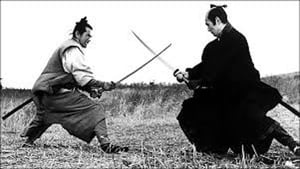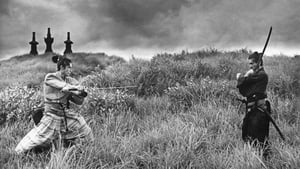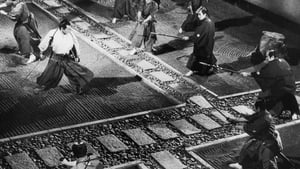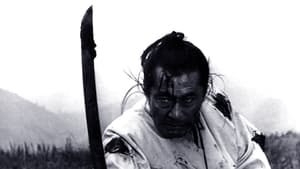Video Sources 0 Views
- Watch trailer
- Samurai Rebellion 1967 Colorized

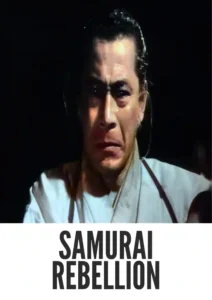
Synopsis
Table of Contents
Toggle
Immerse yourself in the world of feudal Japan with Samurai Rebellion, a powerful jidaigeki film from 1967, now beautifully colorized to enhance its visual and emotional impact. Directed by Masaki Kobayashi and featuring legendary actors Toshiro Mifune and Yoko Tsukasa, this film explores themes of love, duty, and rebellion against injustice. Perfect for fans of classic samurai cinema and those who appreciate compelling stories of human courage, this HD download offers a breathtaking new perspective on a timeless masterpiece. Originally titled Jōi-uchi: Hairyō zuma shimatsu, this is an absolute must-see!
Samurai Rebellion unfolds in 1725 during the Edo period. Isaburo Sasahara (Toshiro Mifune), a skilled swordsman and loyal vassal of the Aizu clan, finds his quiet life disrupted by the whims of his lord. The daimyo orders Isaburo’s son, Yogoro, to marry his former concubine, Ichi, a woman who has fallen out of favor. Despite initial reservations, Yogoro and Ichi fall deeply in love and start a family, bringing unexpected joy to Isaburo’s household.
However, fate takes a cruel turn when the daimyo‘s heir dies. Suddenly, the lord demands Ichi’s return to the castle to care for his new heir, her own son. Devastated by the prospect of losing his wife and child, Yogoro refuses. Inspired by his son’s love and defiance, Isaburo, a man weary of blind obedience, joins their rebellious stand against the daimyo‘s unjust decree.
Their refusal sets in motion a chain of events that tests their loyalty, courage, and the very fabric of samurai society. Isaburo and Yogoro must confront not only the daimyo‘s forces but also the rigid code of honor that binds them. The film culminates in a series of intense sword fights and heartbreaking sacrifices as Isaburo fights to protect his family and challenge the abuse of power.
The film features a remarkable cast who bring depth and nuance to their roles:
-
Toshiro Mifune as Isaburo Sasahara
-
Yoko Tsukasa as Ichi Sasahara
-
Go Kato as Yogoro Sasahara
-
Tatsuya Nakadai as Tatewaki Asano
-
Shigeru Koyama as Geki Takahashi
-
Tatsuyoshi Ehara as Bunzo Sasahara
Samurai Rebellion is a gripping samurai drama that delves into themes of honor, love, and rebellion. It combines intense action sequences with poignant character development, offering a powerful commentary on social injustice and the human spirit.
Released in 1967, Samurai Rebellion reflects a trend in Japanese cinema to critique feudal values and explore the individual’s struggle against oppressive systems. Masaki Kobayashi masterfully uses the samurai genre to question traditional notions of loyalty and sacrifice, presenting a nuanced perspective on the human cost of rigid social structures. The film’s themes resonated with audiences during a time of social change and continue to hold relevance today.
This colorized version of Samurai Rebellion has been meticulously restored using state-of-the-art digital technology, enhancing the film’s visual richness while preserving its artistic integrity. The colorization process involved careful analysis of the original black and white footage, with a focus on creating a natural and immersive viewing experience. The result is a vibrant and engaging presentation that brings new life to the characters, costumes, and landscapes of feudal Japan. While the artistic merits of colorizing classic films are often debated, this version of Samurai Rebellion offers a fresh perspective for both longtime fans and new viewers.
-
: Masaki Kobayashi
-
: Shinobu Hashimoto
-
: Yasuhiko Takiguchi’s short story
-
: Kazuo Yamada
-
: Toru Takemitsu
-
: Toho Company
-
: 128-133 minutes
-
: MP4
-
: HD (1080p)
-
: Compatible with most devices, including smartphones, tablets, computers, and smart TVs.
Samurai Rebellion has been lauded as a masterpiece of Japanese cinema, praised for its compelling storyline, outstanding performances, and thought-provoking themes. It remains a powerful and relevant film that continues to resonate with audiences worldwide.
-
: What is Samurai Rebellion about?
-
A: Samurai Rebellion is a samurai drama about a family’s courageous stand against an unjust daimyo in feudal Japan.
-
-
: Is Samurai Rebellion (1967) a highly regarded film?
-
A: Yes, Samurai Rebellion is widely considered a classic of Japanese cinema.
-
-
: Is this version of Samurai Rebellion colorized?
-
A: Yes, this version has been professionally colorized to enhance the viewing experience.
-
-
: What makes Samurai Rebellion a significant film?
-
A: Samurai Rebellion is a significant film due to its exploration of complex themes, its powerful performances, and its critique of feudal values.
-
-
: What is the download format?
-
A: The download format is MP4, which is compatible with most devices.
-
-
: What resolution is the download?
-
A: The resolution is HD (1080p), providing a high-quality viewing experience.
-
Watch Samurai Rebellion Today!

